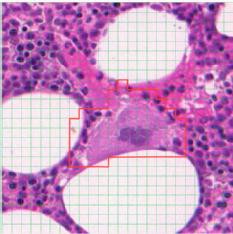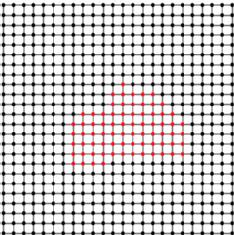SIP Lab - Projects
Home |
People |
Projects |
Publications |
Code & Data |
Internal |
Research funding |
Research areas |
Research funding
- 2023 – 2024. O-VAD: Video Anomaly Detection without Offline Training
Funder: Defence and Security Accelerator (DASA), UK
Description: Development of deep learning technology to detect anomalies in videos using online training
- 2023 – 2024. TinyFaces: Real-time detection and clustering of small faces in videos
Funder: Defence and Security Accelerator (DASA), UK
Description: Development of deep learning technology to detect small faces in videos and cluster them by similarity - 2023. REWARD: Radio Electronics-Warwick Allied Research and Development
Partner: Kharkiv National University of Radio Electronics, NURE, Ukraine
Funder: Research England through UUKi
Description: Development of computer vision technology to index, retrieve, and search images by content without the need for training models. - 2021 – 2023. Multimodal Learning for In-Car Driver Activity Monitoring
Funder: Ford University Research Program, USA
Description: Development of deep learning technology to monitor drivers' distraction using multisensor input - 2019 – 2021. R-DIPS: Real-time Detection of Concealment of Intent for Passenger Screening – Phase 1 & Phase 2
Funder: Defence and Security Accelerator (DASA), UK
Description: Development of computer vision technologies to detect suspicious behaviors and movent at airports - 2019. Spatiotemporal Binarization for Video Analytics using Machine Learning
Funder: Industrial Award, Warwick Ventures, UK
Description: Development of a commercial system for the detection and visualization of unusual events in surveillance videos using binary feature descriptors - 2019. Crossmodal identity matching
Funder: Research Development Award, University of Warwick
Description: Development of deep learning models to match identities across modalities and databases, for example, using voice to match a face and vice versa. - 2016 – 2019. Computer Vision Enabled Multimedia Forensics and People Identification - IDENTITYLink opens in a new window
Funder: Marie Sklodowska-Curie Actions - Research and Innovation Staff Exchange, European Union
Description: Development of technology for digital forensics and biometrics using deep/machine learning and computer vision. Transfer knowledge activities within the academic and industrial partner of the consortium - 2017. ISeC - Intelligent and Secure Cities
Funder: Mobility Grant - Newton Fund International Collaboration Programme, Mexico-UK
Description: Development of computer vision technology for people identification and unusual event detection using video data - 2016 – 2017. Machine Intelligence in Urban Security Systems – MIUSS
Funder: Engineering and Physical Sciences Research Council (EPSRC), UK, Institutional Award
Description: Development of computer vision technology for unusual event detection using video captured by surveillance cameras - 2014 – 2016. Coding of big pathology imaging data for storage, access, and transmission
Funder: Engineering and Physical Sciences Research Council (EPSRC), UK, First Grant Scheme
Description: Development of visualization and data analysis tools for high-resolution pathology images - 2013 – 2017. Pathology Image Coding – PIMCO
Funder: Marie Curie Career Integration Grant, European Union
Description: Development of analysis, coding, and visualization tools for high-resolution pathology images using computer vision and machine learning - 2012 – 2013. Coding of big pathology imaging data
Funder: Research Development Award, University of Warwick
Description: Development of coding methods for high-resolution pathology images
Research areas
Image and video compression |
|
|
|
New imaging formats, such as High Dynamic Range (HDR) images, screen content videos, and digital pathology images, pose heavy demands on storage and transmission resources due to the intrinsic large file sizes. We are developing novel coding methods for access, transmission, and visualization of big imaging data. We are particularly interested in the integration of these coding methods into standard codecs, such as the High-Efficiency Video Coding (HEVC) standard and the new Versatile Video Coding (VVC) standard. We are currently investigating the following topics:
|
Video analytics for surveillance and security |
|
|
Object trajectory forecasting: What will the pedestrian do next? |
Big data continues to grow exponentially, and surveillance video has become one of the largest sources. The video data acquired by existing large networks of cameras introduce many technological challenges, including storage, transmission, and analysis. Among these, one of the most critical challenges is how to intelligently analyze and understand the visual information, e.g., for activity recognition and anomaly detection. We are developing machine-learning solutions to improve the analysis and understanding of video data. We are currently investigating the following topics:
|
Face analytics |
|
|
A demonstration of face ageing. The top row depicts images generated by a vanilla Generative Adversarial Network (GAN) suffering from the mode collapse issue. The bottom row depicts images generated by our proposed method. |
Face is our primary identity. Facial attributes, such as age and expressions, also convey a wealth of social signals. Computational analysis, modelling and recognition of faces are thus critical in many domains including person identification, human-robot interaction, animation and mental health. We are currently investigating the following topics:
|
Computational emotion & behaviour analysis |
|
 |
Computational emotion & behaviour analysis: Human communication is inherently multimodal as it uses both verbal (speech) and non-verbal (gestures, facial expressions, eye gaze) signals. We use a combination of machine learning and signal processing to model, recognize and predict human emotion and behaviour in the context of behavioural health, safety and security, human-human and human-machine interactions. Our current research threads are as follows:
|


 (Left) Pathology image with a region of interest (RoI) delimited by a red contour. The image is divided into non-overlapping blocks. (Right) corresponding 4-connected graph representing the constituent blocks to be encoded using rate control
(Left) Pathology image with a region of interest (RoI) delimited by a red contour. The image is divided into non-overlapping blocks. (Right) corresponding 4-connected graph representing the constituent blocks to be encoded using rate control

